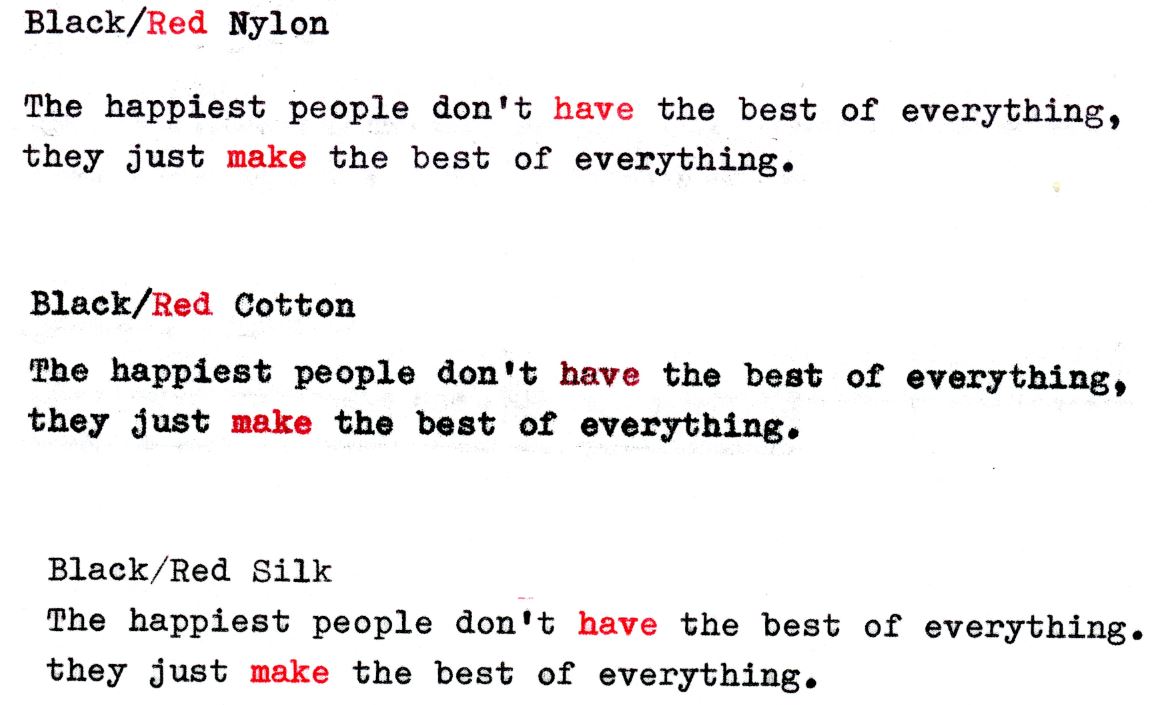Synthèse sur l'Optimisation des Plaques de Gélatine DIY
Résumé Exécutif
Ce document de synthèse détaille les problèmes, solutions et innovations présentés dans le contexte de la fabrication et de l'utilisation de plaques d'impression à la gélatine faites maison (DIY).
L'analyse révèle trois problèmes majeurs avec les recettes traditionnelles :
un séchage prématuré de la peinture, des risques significatifs liés à l'utilisation d'alcool, et des réactions chimiques indésirables avec la peinture acrylique.
La solution centrale est l'adoption d'une nouvelle recette "sobre", qui élimine complètement l'alcool et le remplace par du propylène glycol.
Ce changement résout non seulement le risque d'incendie et les problèmes d'irritation, mais améliore également de manière significative la rétention d'eau de la plaque, prévenant ainsi le séchage de la peinture.
Parallèlement, de nouveaux protocoles de maintenance sont introduits, notamment une "routine de soins" en deux étapes (nettoyage et hydratation) pour préserver la surface de la plaque et inhiber la croissance microbienne.
Les recommandations de stockage ont été révisées pour préconiser un contenant hermétique, en conjonction avec cette nouvelle routine.
Enfin, des outils et méthodologies de précision sont proposés, comme le passage à des mesures en grammes et le lancement d'un "Calculateur de Recette 2.0".
Cet outil en ligne permet de personnaliser les recettes en fonction de la taille de la plaque et de la force (valeur de Bloom) de la gélatine.
Le document aborde également la cause du "caillage" de la peinture acrylique—un environnement acide—et fournit une solution de neutralisation à base de bicarbonate de soude.
--------------------------------------------------------------------------------
1. Problèmes Identifiés avec la Recette Originale
L'analyse de la recette originale de la plaque de gélatine DIY a mis en évidence plusieurs problèmes récurrents rencontrés par les utilisateurs, transformant parfois l'expérience d'impression en un processus frustrant.
1.1. Le Problème de la "Plaque Assoiffée"
Le problème le plus courant est celui d'une plaque qui sèche trop rapidement, rendant la peinture quasi impossible à retirer.
• Cause principale : Un surdosage de gélatine ou l'utilisation d'une gélatine à haute valeur de Bloom. Une telle plaque n'est pas entièrement saturée en eau et devient "très, très assoiffée".
• Mécanisme : La plaque de gélatine sèche aspire instantanément l'eau contenue dans la peinture acrylique. Les pigments adhèrent alors de manière presque irréversible à la surface.
• Conséquence : La plaque se comporte comme un "aimant suceur de peinture acrylique" plutôt que comme une surface de transfert antiadhésive.
• Analogies : L'auteure compare ce phénomène aux premières crêpes que l'on jette, expliquant que la plaque a besoin de "s'échauffer", c'est-à-dire de se saturer en eau, avant de fonctionner correctement.
1.2. Les Risques et Inconvénients de l'Alcool
L'alcool, ingrédient clé de l'ancienne recette pour réduire l'aspect collant et améliorer la conservation, présente deux inconvénients majeurs.
• Risque d'incendie : L'utilisation d'alcool (isopropylique, dénaturé, ou à haute teneur) lors du chauffage du mélange présente un risque réel d'incendie.
Une utilisatrice nommée Rita a d'ailleurs connu un tel incident, ce qui a été un catalyseur pour le changement de recette.
• Irritation : Les vapeurs d'alcool peuvent irriter les yeux et les voies respiratoires des utilisateurs.
• Déshydratation de la plaque : L'alcool contribue significativement à la déshydratation de la plaque sur le long terme.
L'auteure fait une analogie avec la "sensation de Sahara dans la bouche" après une soirée arrosée pour illustrer cet effet.
1.3. Comportement Anormal de la Peinture Acrylique
Certains utilisateurs ont rapporté un comportement "super étrange" de la peinture acrylique, qui se met à cailler ou à se décomposer sur la plaque.
• Cause : Un environnement acide (pH bas).
• Origine du problème : L'ajout d'acides comme le jus de citron ou l'acide citrique dans le mélange, souvent dans le but d'agir comme conservateur.
• Effet : Dans un milieu fortement acide, le système liant de la peinture acrylique peut se rompre, provoquant son caillage.
La peinture adhère alors davantage au rouleau qu'à la plaque elle-même.
2. La Nouvelle Recette "Sobre" : La Solution Centrale
Pour remédier à ces problèmes, la recette a été entièrement reformulée, la modification la plus importante étant le retrait de l'alcool, qualifiant la nouvelle plaque de "sobre".
2.1. Le Remplacement de l'Alcool par le Propylène Glycol
L'alcool est remplacé par le propylène glycol, décrit comme le "partenaire parfait" de la glycérine.
• Propriétés : Le propylène glycol appartient chimiquement à la famille des alcools, mais il est beaucoup moins volatil, ne s'évapore quasiment pas et présente un risque d'incendie significativement plus faible dans des conditions de cuisine normales.
• Bénéfices dans la recette :
◦ Stabilité : Il aide à rendre la plaque plus ferme et stable sans lui "voler toute son eau".
◦ Rétention d'humidité : Il aide la plaque à rester flexible, à moins rétrécir et à conserver son humidité, ce qui garantit de belles impressions.
◦ Conservation : Il contribue à ralentir la croissance des bactéries et des moisissures, agissant comme un agent de conservation.
• Conclusion de l'auteure : "Si je devais choisir entre 'Brûle bien' et 'Imprime bien'... je suis assez sûre que vous choisirez la plaque qui imprime parfaitement plutôt que le feu d'artifice dans la cuisine."
2.2. Expérimentations avec des Plaques "Fusion"
Des tests ont été menés sur des plaques "fusion" combinant les propriétés de la gélatine et d'agents gélifiants à base de plantes. Ces versions semblent résoudre nativement le problème de séchage de la peinture.
• Ingrédients testés :
◦ Gomme de xanthane
◦ Konjac (ou glucomannane) : L'agent actif de la farine de konjac, connu pour son pouvoir gélifiant et épaississant extrême.
• Résultats préliminaires : Les plaques fusion semblent libérer plus de peinture sur le papier, laissant moins de résidus sur la surface. Les tests sont jugés "très prometteurs".
• Note : Une exploration plus approfondie de ces hydrogels est prévue dans une future vidéo.
3. Nouveaux Protocoles de Maintenance, de Stockage et de Réparation
La nouvelle approche s'accompagne de protocoles mis à jour pour entretenir, stocker et même réparer les plaques.
3.1. Réhydratation d'une Plaque Sèche
Une plaque devenue trop sèche peut être "ramenée à la vie" sans être refondue.
• Méthode : Un "bain" d'eau. La plaque est immergée dans l'eau pendant une durée allant de 3 à 48 heures, voire plus, jusqu'à ce qu'elle absorbe l'eau nécessaire et augmente de volume.
• Alternative : Si un contenant adapté n'est pas disponible, la surface peut être vaporisée d'eau, recouverte de papier essuie-tout humide et enveloppée dans un film plastique.
3.2. Nettoyage des Anciennes Couches de Peinture
Une découverte notable a été faite pour enlever les couches de peinture tenaces : La colle artisanale simple à base d'eau (colle blanche universelle) s'est avérée extrêmement efficace pour décoller les anciennes couches de peinture séchée de la surface de la plaque.
3.3. Nouvelle "Routine de Soins"
Un protocole de soins post-impression, comparé à une routine de soins pour la peau, est désormais recommandé pour préserver la plaque.
1. Nettoyage Doux : Vaporiser un spray nettoyant sur la plaque, essuyer avec un chiffon doux pour enlever les résidus de peinture.
2. Rinçage : Repasser sur la surface avec de l'eau claire pour éliminer tout tensioactif résiduel.
3. Hydratation et Protection : Masser une petite quantité d'un spray de soin sur la surface.
Les recettes pour ces sprays sont les suivantes :
Spray
Ingrédients (en grammes)
Instructions
Spray Nettoyant
- 500g Eau<br>- 2g Savon neutre<br>- 1g Alcool (pour dissoudre)<br>- 1g Huile essentielle (Arbre à thé ou Clou de girofle, optionnel)
Dissoudre l'huile essentielle dans l'alcool, ou directement dans le savon. Mélanger tous les ingrédients et verser dans un flacon pulvérisateur.
Spray de Soin
- 200g Eau<br>- 2g Huile pour bébé (huile minérale)<br>- 1g Huile essentielle d'arbre à thé<br>- 1g Huile essentielle de clou de girofle
Mélanger tous les ingrédients. Agiter vigoureusement avant chaque utilisation car le mélange est biphasique (l'huile se sépare de l'eau).
Le spray de soin laisse un "film protecteur huileux très fin" qui protège contre le dessèchement et rend la surface moins accueillante pour les microbes grâce aux propriétés des huiles essentielles.
3.4. Recommandations de Stockage Mises à Jour
• Ancienne recommandation (pour les plaques avec alcool) : Ne pas stocker dans un contenant hermétique les premiers jours pour permettre à l'humidité de s'échapper et éviter un "microclimat tropical" propice aux moisissures.
• Nouvelle recommandation (pour les plaques "sobres" avec routine de soin) : Stocker dans un contenant hermétique dès le début.
Cette approche est jugée optimiste pour minimiser la perte d'eau, les précautions étant prises par la routine de soin antimicrobienne.
4. Outils et Méthodologies de Précision
Pour améliorer la fiabilité et la reproductibilité des résultats, de nouvelles méthodologies ont été introduites.
4.1. Passage aux Mesures en Grammes
Toutes les nouvelles recettes sont désormais formulées en grammes plutôt qu'en unités de volume.
• Raison : La précision est cruciale, en particulier avec les agents gélifiants végétaux où "un demi-gramme de plus ou de moins peut déjà faire une énorme différence".
• Avantage pratique : Il devient très simple de calculer la perte d'eau lors de la refonte d'une plaque.
Il suffit de peser la plaque usagée, de comparer son poids au poids total initial des ingrédients, et d'ajouter la différence en eau lors de la refonte pour la restaurer à son état optimal.
4.2. Le Calculateur de Recette 2.0
https://ashrey.com/diy-gel-plate/
Un nouvel outil en ligne, le "Calculateur de Recette 2.0", a été développé.
• Fonctionnalités :
◦ Fonctionne entièrement en grammes.
◦ Prend en compte la force de la gélatine (valeur de Bloom).
◦ Permet de dimensionner les recettes précisément à la taille de plaque souhaitée.
◦ Offre le choix entre différents types de plaques : standard, plus souple, ou la version expérimentale "fusion" avec hydrogel.
• Disponibilité : L'outil est accessible sur le site web de l'auteure. Le calculateur classique (en unités métriques et impériales) reste également disponible.
5. Diagnostic et Solution pour le Caillage de la Peinture
Le mystère du comportement anormal de la peinture acrylique a été résolu.
• Diagnostic : La peinture acrylique n'aime pas les environnements acides. Un pH bas provoque son caillage et la rupture de son système liant.
• Action à éviter : Ne pas ajouter d'acides (jus de citron, acide citrique) comme conservateurs dans le mélange de la plaque de gélatine.
• Solution de Réparation ("Fix d'Urgence") : Pour une plaque déjà acide, il est possible de neutraliser sa surface.
1. Préparer une solution alcaline douce : Dissoudre 2 à 3 grammes de bicarbonate de soude (disponible sous des noms comme "Kaisernatron" en Allemagne) dans 1 litre d'eau.
2. Appliquer : Verser ou vaporiser la solution sur la surface de la plaque.
3. Attendre : Laisser agir pendant 30 à 60 secondes.
4. Essuyer : Sécher la plaque, puis la nettoyer à nouveau avec de l'eau propre ou une lingette pour bébé.
5. Répéter si nécessaire jusqu'à ce que la plaque fonctionne correctement.

 via post by u/fer_mese at
via post by u/fer_mese at 